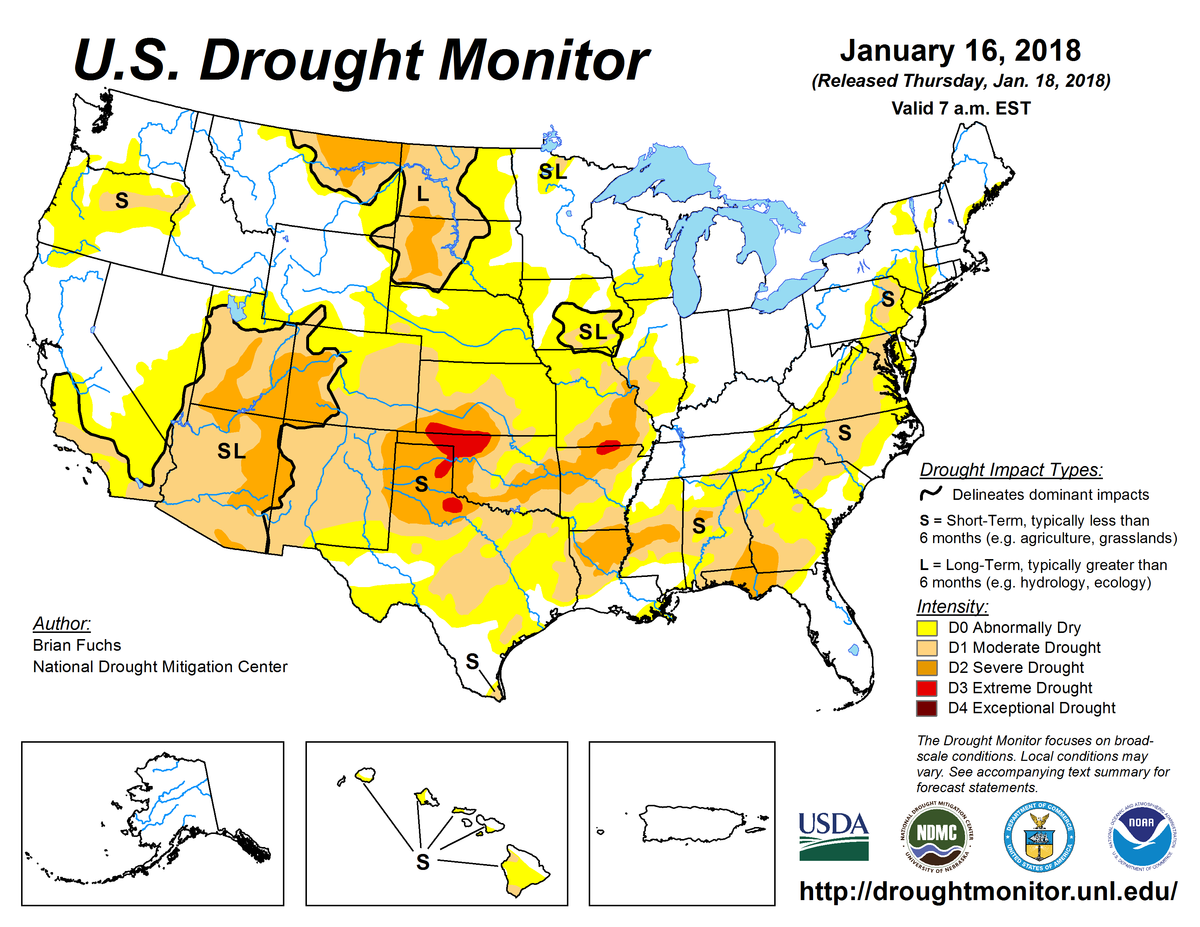
According to the January 16, 2018, U.S. Drought Monitor, moderate to extreme drought covers 33.0% of the contiguous United States, an increase from last week’s 32.1%. Extreme drought also increased from 0.5% last week to 0.6%. And, exceptional drought remained absent from the Nation for a 14th consecutive week.
The atmospheric circulation during this U.S. Drought Monitor week began with a Pacific weather system moving in a westerly flow. The upper-level low pressure system dragged a Pacific cold front across the West and into the Plains early in the week, bringing above-normal precipitation to parts of the Southwest and northern Plains. Temperatures were warmer than normal, so the precipitation in the Southwest was mostly rain, but some snow fell at the higher elevations. The weather system dried out as it hit the southern Plains, but it picked up Gulf of Mexico moisture and brought precipitation to the Lower Mississippi Valley and across the East.
The circulation pattern shifted near the end of the week into a pronounced western ridge and eastern trough. The ridge kept the West warmer and drier than normal. Under the eastern trough, a cold Canadian weather system plunged into the Plains and East, dropping a wintry mix of weather in its wake. As a result, some contraction of drought occurred in the northern Plains, Lower Mississippi Valley, and Southeast, but drought and abnormal dryness expanded across larger areas in the West, southern Plains, Southeast, and Midwest.
Abnormal dryness and drought are currently affecting over 163 million people across the United States—about 52.6% of the country’s population.

The full U.S. Drought Monitor weekly update is available from Drought.gov.
In addition to Drought.gov, you can find further information on the current drought as well as on this week’s Drought Monitor update at the National Drought Mitigation Center.
The most recent U.S. Drought Outlook is available from NOAA’s Climate Prediction Center and the U.S. Department of Agriculture provides information about the drought’s influence on crops and livestock.
For additional drought information, follow #DroughtMonitor on Facebook and Twitter.



